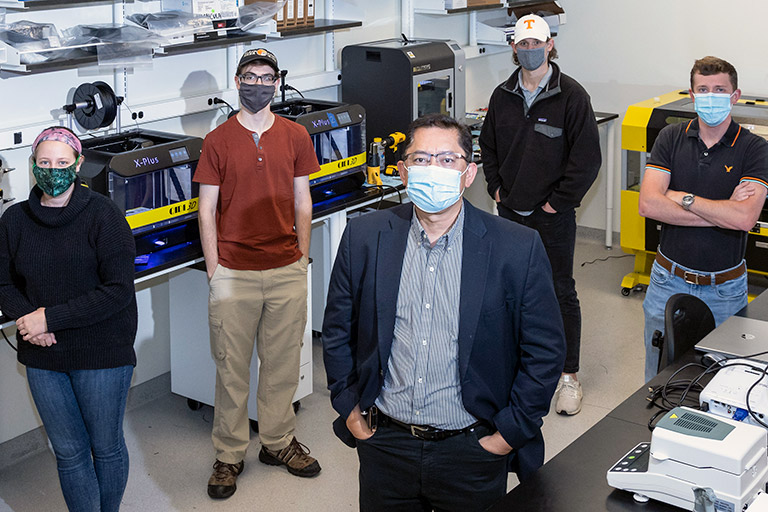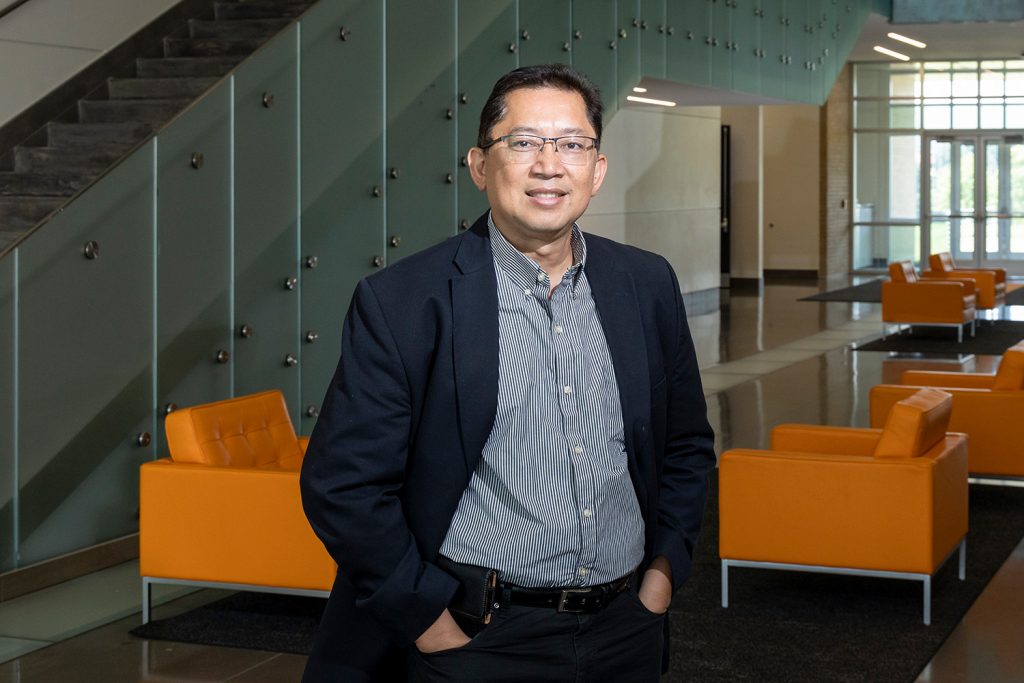By David Goddard. Photography by Carlos Jones/Oak Ridge National Laboratory, US Department of Energy
Though times have changed in the many decades since CBE’s founding, the department’s commitment to cutting-edge research remains as focused as ever.
As the world has turned to new technologies to provide more sustainable offerings ranging from energy to manufacturing to healthcare, CBE faculty have been there to answer the challenge and provide solutions to emerging problems and opportunities.
For UT and its frequent collaborator and key contributor Oak Ridge National Laboratory (ORNL), there is perhaps no better example of finding people to tackle critical issues than the joint Governor’s Chair initiative.
Established in 2006, the program has helped recruit thought leaders in everything from energy to urban design to serve as joint faculty at UT and ORNL, giving them the opportunity to focus their research through the advantages offered by each institution.
There are 15 Governor’s Chairs, of which the department is home to three: Governor’s Chair for Biorefining Art Ragauskas, Governor’s Chair for Electrical Energy Conversion and Storage Tom Zawodzinski, and the most recent faculty member to join the program, Governor’s Chair for Advanced and Nanostructured Materials Rigoberto Advincula.
We’re very fortunate and honored to have three Governor’s Chairs on our faculty. It highlights and validates not only the research and work we do, but also the importance of the relationship we’ve built with ORNL.”
Advincula’s specialty is polymers and materials in general, with a specific focus on properties and mechanics at nanometer-sized levels.
His work impacts the production and improvement of bio-inspired technology and medicine, optics and sensors, energy, and advanced manufacturing.
Advanced manufacturing, in particular, is a key research focus across many colleges at UT and the source of a wide variety of collaborative projects and research between the university and ORNL, making Advincula’s hire all the more important to both institutions and to the department.
“Being able to join ORNL and UT as a Governor’s Chair has allowed me to more deeply explore new and better materials with more resources,” said Advincula. “Having a program like this where you are strongly supported and can call upon the advantages of both a national laboratory and an academic institution will greatly augment our research capabilities.”

UT students Gillian Holcomb, Joseph Broady, Zane Smith, and Lucas Kilpatrick, left to right, stand behind joint UT-ORNL Governor’s Chair Rigoberto Advincula in his lab at the Joint Institute for Advanced Materials. Photo courtesy of Carlos Jones/Oak Ridge National Laboratory, US Department of Energy.
Since his hiring in January, Advincula has served as the leader of ORNL’s Macromolecular Nanomaterials group, where he is using various 3D printing techniques like stereolithography, fused deposition modeling, selective laser sintering, and digital light processing to improve and create new composites, polymers, and materials.
His research group—part of the Center for Nanophase Materials Sciences at ORNL, one of five US Department of Energy Nanoscale Science Research Centers—is able to utilize the lab’s world-renown expertise in neutron sciences and high-performance computing to enhance its scientific exploration.
“The opportunities for collaboration and support at ORNL are part of what makes it such a global leader in several areas, nanomaterials among them,” said Advincula.
While having a partner who is known around the world is a benefit itself, relationships between the lab and universities have their own rewards, with faculty being able to conduct research in a lab setting and take what has been learned back to the classroom, students being able to take part in important, educationally-relevant lab work, and giving the lab access to the scientists of tomorrow.
For the department, that’s a win-win situation.
Other Governor’s Chairs Also Connect Department with ORNL
The research areas of UT-ORNL Governor’s Chairs Art Ragauskas and Tom Zawodzinski are critical to both organizations and the world at large.
With a focus on biorefining, Ragauskas has dual appointments to the department and the Institute of Agriculture’s Department of Forestry, Wildlife, and Fisheries. His main focus is on finding plant and natural materials for both fuel and power sources, but he also researches ways of using such materials in health care and for use as packing materials. At ORNL, he serves as a member of the Biosciences Division of the US Energy and Environmental Sciences Directorate.
With a focus on conversion and electrical energy storage, Zawodzinski is researching ways to make fuel cells and other energy storage technologies more durable over time. His research also includes looking at ways to ensure cells function properly at high temperatures and working to improve the basic mechanics of the chemical reactions taking place in fuel cells and batteries. In addition to the department, Zawodzinski serves in Division of Materials Science and Technology at ORNL.
